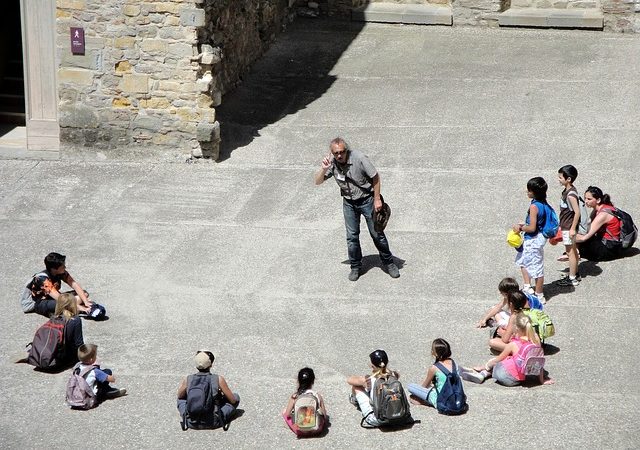
The 7-11 Principle Explained
In yesterday’s devotion I began explaining the 7-11 Principle. I shared how Jeremiah 29:11 (“For I know the plans I have for you…”) is one of the most popular bible verses — with various products available for purchase as proof. But this verse is commonly not understood within its context of the Babylonian captivity.
Read Post
The 7-11 Principle: God has a Plan
Our passage today talks about God’s plans. But what do I mean by this “7-11 Principle”? I’m not talking about indulging in Slurpees or eating 99-cent hot dogs from this well-known convenience store. The 7-11 Principle is something to help people remember the context of a well-known verse from the Old Testament book of Jeremiah.
Read Post
The I Am Wants More Than Admiration: Part 2
In today’s text from John, Jesus makes the outrageous claim that whoever doesn’t believe him is a slave to sin. How do we as leaders continue to hold onto these essential beliefs like sin without alienating the very people we are trying to reach, people who think of sin as an antiquated or even oppressive idea? In a pluralistic world that increasingly considers Christian orthodoxy and orthopraxy a form of “extremism,” keeping right beliefs connected to right actions is a formidable challenge.
Read Post
The I Am Wants More Than Admiration: Part 1
John’s gospel portrays Jesus as a new kind of Moses who brings bread and light as well as shepherding Israel in the wilderness. In the raising of Lazarus, Jesus is shown as someone who is Lord over life and death—something only God can do! To top it off, Jesus implies in John 8 that he is even greater than Father Abraham by invoking the revered name for God, Yahweh, by saying “I am”. That’s why these listeners were going to kill him: for calling himself equal with God. These are people who earlier demonstrated some level of admiration for Jesus but now wanted to kill him. Jesus seems to be forcing them to decide if they truly want to be followers of him or are content simply admiring him.
Read Post
I Am the True Vine: Part 2
“By this my Father is glorified, that you bear much fruit and so prove to be my disciples.” John 15:8 (ESV) In yesterday’s…
Read Post
I Am the True Vine: Part 1
Throughout the gospel of John, Jesus has been using important symbols from Israel’s history and Scriptures (shepherd, bread, water, light). Jesus now uses some of the most powerful images in Jewish culture to talk about himself: “I am the true vine….” The vineyard was one of Israel’s most prized historic symbols of its nationhood and inheritance.
Read Post
“I Am The The Resurrection And The Life”, Part 2
In yesterday’s Life for Leaders devotion, I talked about Jesus’ claim to be the resurrection and the life, and the implications of this truth in my personal life and in the lives of all leaders. Verse 33 comes after Jesus’ claim to be the resurrection and the life. It precedes the miracle of Lazarus being raised from the dead and is followed by John 11:35, which is famously the shortest verse in the bible: “Jesus wept.” These two verses hint that Jesus was not overcome with grief over the death of Lazarus (whom he knew he was going to bring back to life), but rather deeply grieved over the state of humanity. There is so much pain and heartache in this world and Jesus is grieving that his resurrection life is not yet fully realized in the creation that he so lovingly made. Jesus will give a glimpse of his glory to come in the raising of Lazarus, yet here he weeps because death still reigns until he comes again to eradicate it in full.
Read Post
“I Am The The Resurrection And The Life”, Part 1
John 11 highlights two contrasting themes of life and death, where Jesus is seen as the master of both. Ironically, the raising of Lazarus brought a death sentence on Jesus’ life (11:53) and on Lazarus’ life as well (12:10). But right in the midst of these words of death, Jesus offers life. Two thousand years after Jesus said these words, his resurrection life continues to pour into peoples’ lives.
Read Post
I Am The Good Shepherd: Part 2
In yesterday’s devotion I highlighted the world’s need for a shepherd and the opportunity God has given us to provide shepherd-like leadership amidst all kinds of crises. Today I want to emphasize our own personal need for the Good Shepherd, especially as we seek to meet the needs around us.
Read Post
I Am The The Good Shepherd: Part 1
In my previous posts on the leadership of Jesus, I’ve been asking about the significance of Jesus calling himself “the light of the world” and “the bread of life.” Today we’ll look at Jesus calling himself, “the good shepherd.” To a hungry world, Jesus says “I am the bread you are really hungry for.” To a dark world Jesus says “I am the light that will show you the way.” To a lost world Jesus says “I am the shepherd you need.”
Read Post
I Am The Bread Of Life
In yesterday’s post I highlighted how Jesus surprised his hearers by saying, “I am the bread.” The Jews of his day were looking for a Messiah who could bring manna like Moses. Jesus did offer literal bread from a supernatural source when he multiplied the loaves and fish. But what he offered most of all was himself. He was the manna from heaven. He was the bread.
Jesus is not only “the bread” but also and specifically the “the bread of life.”
Read Post
I Am The Bread
When Jesus says, “I am the bread,” he is confirming their hopes that he is the Messiah while challenging them to understand that he is something much more than a problem solver. Instead of saying, “I will give you bread,” he says, “I am the bread.” For those who are seeking something from Jesus, he offers himself instead.
One of the most common mistakes we as leaders can make is wanting the gifts of the Giver more than the Giver of the gifts.
Read Post
The Light of the World, Part 2
In yesterday’s devotion, I suggested that the candles lit in the temple from the annual Feast of Tabernacles was the backdrop to Jesus claiming, “I am the light of the world.” In fact, because he probably said this on the last day of the festival, Jesus was creating an even more vivid contrast than it appears at first glance.
Read Post
The Light of the World, Part 1
Throughout John’s gospel, distinctive “I am” statements point toward Jesus’ divinity, centrality, and authority. In John 8:12-20, for example, Jesus says, “I am the light of the world.” What does this mean?
Read Post
Eucharist: Thanks
As I’ve been reflecting on the meaning of the Lord’s Supper, I have enjoyed finding deeper meanings of this Passover meal that Jesus reinterprets to place himself at the center of the biblical story.
Read Post